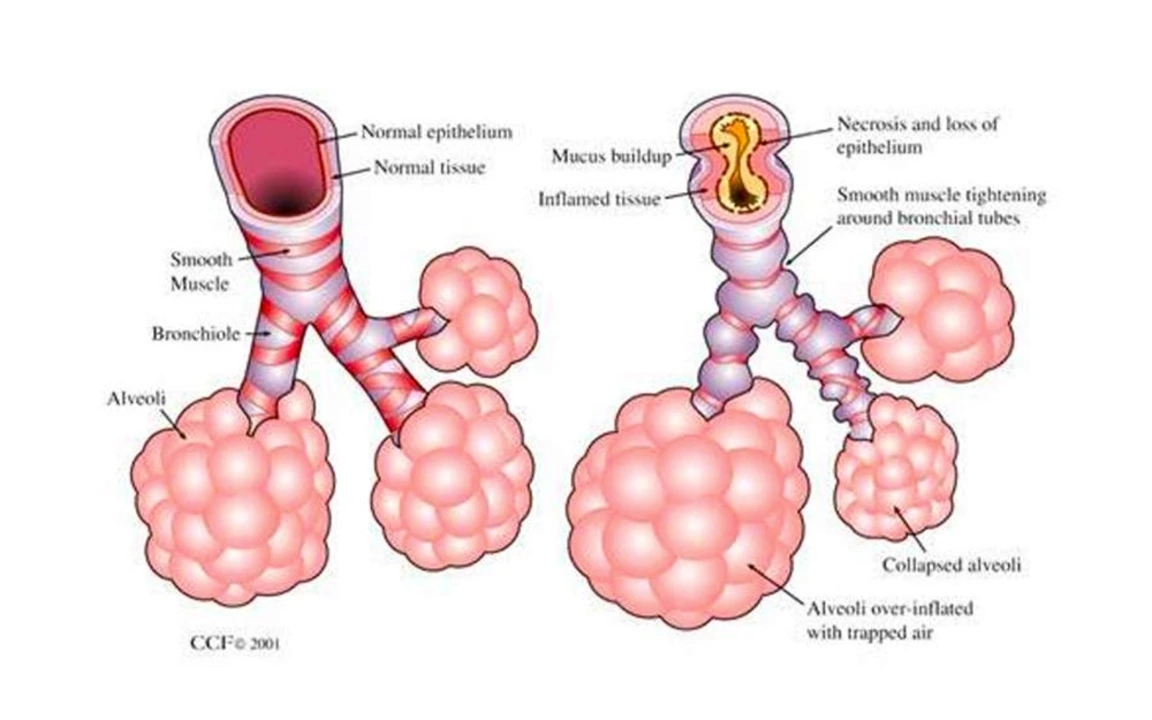Respiratory infection — what to watch for and what actually helps
Most respiratory infections start like a bad cold: sore throat, runny nose, cough. A key fact to know right away — many are viral, so antibiotics won’t help. That matters because taking antibiotics when you don’t need them can cause side effects and resistance. If you want quick, practical advice, this tag gathers real patient stories, medication guides, and tips for managing symptoms at home.
When to worry and see a doctor
If symptoms are mild and improving in a few days, you can usually manage at home. Call or see a clinician if you notice any of these: shortness of breath, high fever that won’t come down, chest pain, confusion, or a cough that gets worse after initial improvement. Also get checked if you have chronic lung disease or a weakened immune system — they’re at higher risk for complications.
For sinus issues, we have a detailed patient diary: "Ampicillin for Sinus Infection: 7-Day Patient Diary & Real Recovery Experience." That piece shows when antibiotics were started, how symptoms changed day by day, and what side effects to expect. Use it to compare your course and decide whether it’s time to contact a provider.
Treatments that help — practical and realistic
Symptom relief is often the first step. Over-the-counter paracetamol or ibuprofen can ease fever and aches — our article "Paracetamol vs Ibuprofen: Brain Mechanisms Explained for Pain Relief" explains how they differ so you can pick what fits you best. For cough or congestion, saline rinses, steam, and staying hydrated work well.
Antibiotics are useful for bacterial infections like some sinusitis or pneumonia, but only when prescribed. The ampicillin diary above gives a realistic look at how someone felt on antibiotics and why follow-up matters. If you use inhaled meds for asthma or COPD, staying on your maintenance inhaler is crucial during an infection. Check our "Comparing Symbicort Subscription Services" post for tips on keeping inhalers refilled and avoiding gaps in treatment.
If you buy meds online, pick trustworthy sources. Our review "Online Pharmacy mydrugshoplive.com Review" covers how to judge delivery speed, legality, and safety when ordering from Australia. Cheap isn’t worth risking fake or expired drugs.
Prevention is simple: wash hands, cover coughs, stay home when contagious, and get vaccines when recommended. Flu shots and COVID boosters don’t stop every infection, but they reduce the chance of severe illness.
Want a quick next step? If your symptoms are mild: rest, fluids, and pain relievers as needed. If you’re unsure about antibiotics or your breathing, contact a healthcare provider and mention any inhaler use or chronic conditions. Browse the linked posts in this tag for in-depth, real-world guides and patient stories that make the choices clearer.
As a blogger, I recently came across some fascinating information about the use of azithromycin in treating bronchiolitis. Azithromycin is an antibiotic that has shown promising results in reducing the severity of bronchiolitis symptoms, which primarily affects infants and young children. It works by fighting the bacteria that cause the infection, helping to alleviate the inflammation in the airways. Studies are still ongoing, but early findings suggest that azithromycin may be a valuable addition to the current treatment options for bronchiolitis. I am eager to follow the progress of this research and share updates with my readers in the future.

